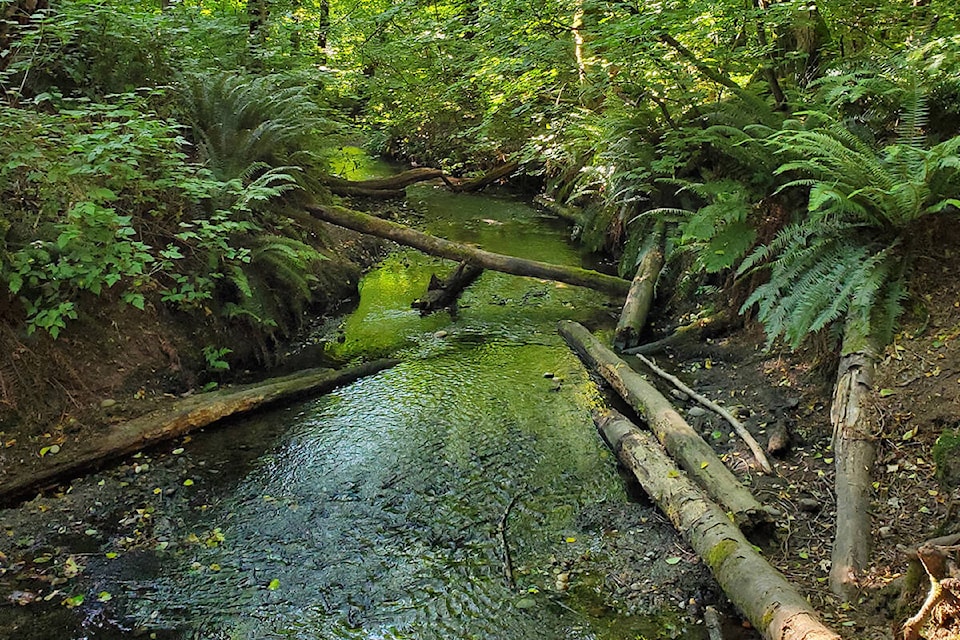The City of Surrey’s South Campbell Heights Regional Growth Strategy Amendment request will be returning to the Metro Vancouver agenda – most likely at the next board meeting on Feb. 25.
At Surrey Council’s Feb. 14 regular meeting, councillors received a corporate report on the controversial amendment – a key element in Surrey’s land use plan, already passed by council, to extend the Urban Containment Boundary into the rural South Campbell Heights area to allow ‘mixed employment’ light-industrial uses there.
Many environmentalists, and Semiahmoo First Nations leadership, have expressed concern that the move poses a threat to the sensitive Little Campbell River watershed.
A majority of council approved sending the report on to Metro Vancouver staff, however.
According to the report, prepared by Ron Gill, acting general manager of planning and development, and Scott Neumann, general manager of engineering, “on receipt of the report, Metro Vancouver staff would prepare a cover report to accompany Surrey’s report, and endeavour to bring it forward to the next MVRD Board meeting, scheduled for Feb. 25.”
Voting against the motion to receive and forward the report were Couns. Linda Annis, Brenda Locke and Jack Hundial.
“This is an incredible rush,” Locke told council, after citing the United Nations Declaration on the Rights of Indigenous People and the requirement for consultation on any action that would affect Indigenous people’s futures.
“We’re trying to push this through. Really – what’s the hurry?” she said
She also wondered what the impact would be “if we didn’t move it forward now, if we wait even a couple of months to get the First Nation’s blessing on it, or at least understanding of where we’re going with it?”
“It seems to me that this is another rushed project – I don’t follow why we’re putting our foot on the gas. It just doesn’t make sense.”
READ ALSO: Metro Vancouver hits pause button on South Campbell Heights development proposal
READ ALSO: Disappointment, elation, as South Campbell Heights proposal paused by Metro board
At the Jan. 28 Metro Vancouver board meeting members had heard from supporters who emphasized economic benefits of the amendment, but also from many environmentalists and scientists, as well as Semiahmoo First Nation Chief Harley Chappell and councillor Joanne Charles, who said the scheme poses a potentially catastrophic risk to environment in the Little Campbell River watershed, including fish and other wildlife habitat in the target area, as well as the aquifer below it.
READ ALSO: Video offers top 10 reasons to oppose Surrey’s South Campbell heights development plan
After extensive discussion, members voted – on a motion by Annis, as board member – to refer the amendment “back to staff to discuss concerns that have been raised by Board members with City of Surrey staff.”
The latest Surrey report itemizes concerns raised by Metro Vancouver board members, and actions planned by Surrey staff, many of which hew to Surrey’s argument that detailed environmental study will be part of a second phase of planning – but only after Metro Vancouver endorses the boundary extension.
“The proposed amendment is estimated to generate between 10,000 – 12,000 new jobs and provides a real opportunity to address regional challenges of new supply of business employment over then next 10-15 years,” the report concludes.
“Along with the employment, (the plan) will also provide regional level protection of sensitive ecosystems through the proposed inclusion of 86 hectares of land into the ‘Conservation and Recreation’ designation.”
Contrary to statements made to the Metro Vancouver board by Chappell and Charles that consultation with the nation to date was only “in its infancy” the Surrey report asserts that “city staff have been regularly meeting with staff at the Semiahmoo First Nation.”
“These meetings have focused on information sharing, relationship building and scoping work to build a baseline understanding of the cumulative effects on traditional practices of the Semiahmoo First Nation,” it states, citing a total of seven preliminary meetings held between Dec. 1 and the Metro Vancouver discussion on Jan. 28.
A ‘cumulative effects assessment’ (CEA) will be undertaken by SFN staff with Surrey’s support, it adds, adding that “outcomes of the CEA will advise Surrey staff through the ongoing planning process and may result in archeological policy or regulatory requirements for future development within the (plan) area.”
Also included as an appendix to the report is a Feb. 3 letter from Mayor Doug McCallum to Chappell, inviting SFN to participate in a council-to-council meeting.
While Annis thanked McCallum for writing the letter, she reiterated earlier arguments she had raised in making the referral motion.
“While I strongly support economic development for my city and for my region, this particular project was not done through proper consultation,” she said.
“I’ve heard repeatedly from over 900 residents, ‘what’s the rush and why is it not being done with proper consultation with the community, with (SFN) and other stakeholders?’ I wasn’t elected to ignore those 900 people.”
“The underlying concern here is twofold,” said Hundial.
“One – the environmental impact; which still has not satisfied the concerns of everyone involved.
“The other piece is … we’ve missed out a large part of the consultation with the First Nation partners…I really think this is a key area where we can certainly find room to improve. If it takes an extra month, if it takes an extra two months, the lands aren’t going anywhere – they’re just increasing in price.”
alex.browne@peacearchnews.com
Like us on Facebook and follow us on Twitter
